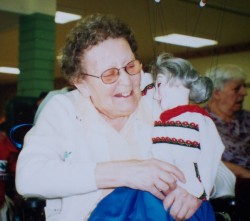Hospice Work
There is a time in palliative care when the focus is not on dying but on the remaining quality of life. Upliftment and healing of the spirit through joy and compassion is one of the greatest gifts to be given in end of life care.

While seeking to uplift, heal and enhance the quality of life for palliative people and their grieving families, it is equally as important to give an opportunity to the dying to have a voice, be able to pass on life lessons to friends and family, to simply create and give the "spiritual gifts" they have to offer.
While visiting a palliative patient in the hospital, she asked me,"and what can I do for you"! It was not a question I had considered when walking into her room, which, by the way, she had declared a "Happy Place". After pausing for a moment I asked her what message she would like to be given on her behalf. She said, "Tell them to bring joy, laughter and humour...always humour to the dying. There is no time for negatives." It was her way of transforming her situation, of giving back, using her spirit and mind to rise above her pain and imminent death.
Using these creative arts to entertain, focus on palliative issues or to train Hospice volunteers has proven an effective and fun way to promote discussion and healing.
The hospice and palliative connection to marionettes is an interesting one.
The travel-weary and ill crusaders on their way to and from the Holy Land found places of refuge and healing in monasteries that were the first hospices. Monks and priests used marionettes to uplift, entertain and enact biblical stories and life teachings because it was considered sacrilegious at the time for humans to portray spiritual figures. The name Marionette, meaning "Little Mary" is thought to have come from the figure of The Virgin Mary in the telling of the Nativity story.
Using these creative arts to entertain, focus on palliative issues or to train Hospice volunteers has proven an effective and fun way to promote discussion and healing. They are not limited to age or situation and can be applied to any need such as the Teen Suicide Prevention Program.
The art of storytelling is universal... the impact can be powerful.




